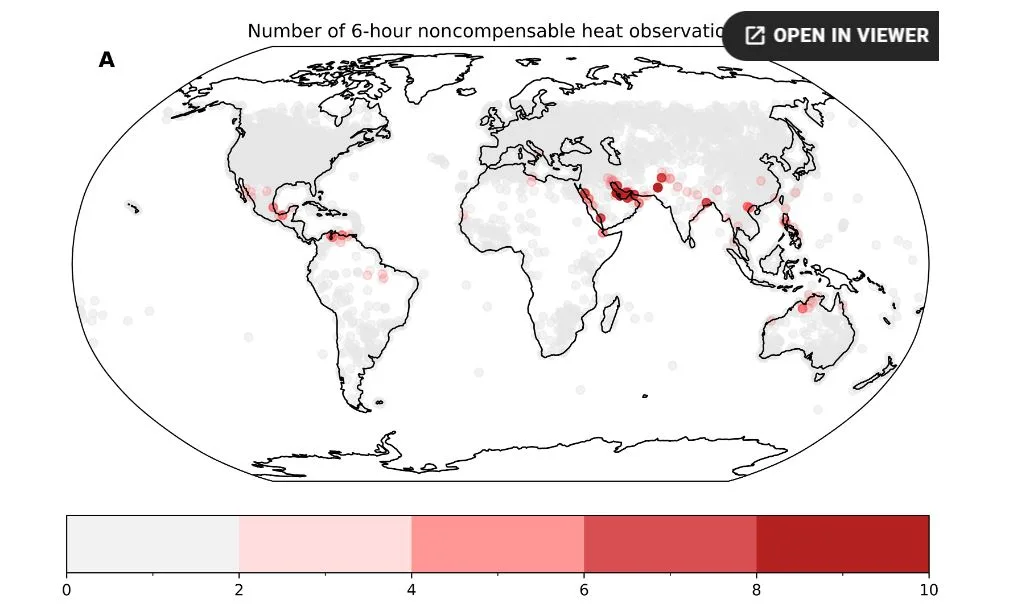Science Extract: As global temperatures continue to rise, a critical concern looms large: when and where will conditions reach levels too extreme for human survival? A recent study delves deeply into this pressing issue, zeroing in on the emergence of non-compensable heat stress—a pivotal threshold for human survival.
The non-compensable heat stress threshold is the point at which a healthy individual can no longer maintain a stable core body temperature without external cooling assistance. Exposure to these conditions for six hours could result in potentially lethal increases in core body temperature.
This study, titled “Observational and model evidence together support wide-spread exposure to non-compensable heat under continued global warming” by Powis et al. (2023) and published in Science Advances, thoroughly investigates the expanding risks of non-compensable heat stress as a consequence of the world’s ongoing rise in global temperatures.
The study uncovers alarming findings, emphasizing crucial takeaways essential for adapting and ensuring a sustainable future. Here are key insights from this study vital for our understanding and action:
1. Current Survival Limits: Previous research proposed a theoretical upper limit for survivable conditions at a 35°C wet-bulb threshold. However, this approach oversimplifies the multifaceted factors influencing heat-related morbidity and mortality.
2. Alarming Expansion: Findings indicate a rapid expansion of non-compensable heat stress conditions worldwide as global temperatures continue to rise. This expansion could affect a significant portion of the global population, highlighting the urgent need for proactive measures.
3. Historical Evidence: Historical records already contain instances of non-compensable heat stress, primarily in densely populated areas with limited access to air conditioning. The study underlines the vulnerability of such regions to extreme heat events.
4. Mitigating Factors: The study emphasizes the role of behavioural adaptation, physiological acclimatization, and the availability of cooling strategies in mitigating the health impacts of extreme heat. These factors play a critical role in shaping the outcomes of heat stress on populations.
5. Future Adaptation Strategies: Projections of future heat-related mortality and morbidity should account for the changing relationship between environmental conditions and population vulnerability due to evolving adaptation efforts. Policymakers must consider emerging critical thermal limits, such as non-compensable heat stress, to plan effective adaptation strategies.
6. Need for Urgent Action: This study serves as a vital reminder that climate change is pushing human adaptation to its limits. Urgent action and effective policies are imperative to protect vulnerable populations from the growing risks associated with extreme heat.
In a world rapidly evolving due to climate change, understanding and addressing the threats posed by extreme heat is not just a matter of survival, but a testament to our ability to adapt and secure a sustainable future.
Reference:
Powis, C. M., Byrne, D., Zobel, Z., Gassert, K. N., Lute, A. C., & Schwalm, C. R. (2023). Observational and model evidence together support wide-spread exposure to noncompensable heat under continued global warming. Science Advances. https://doi.org/adg9297
